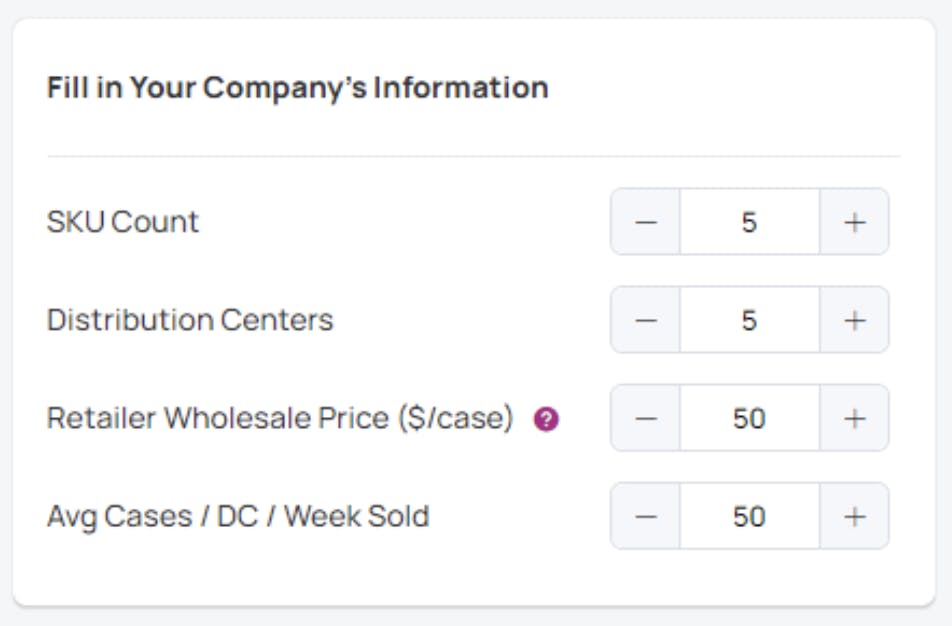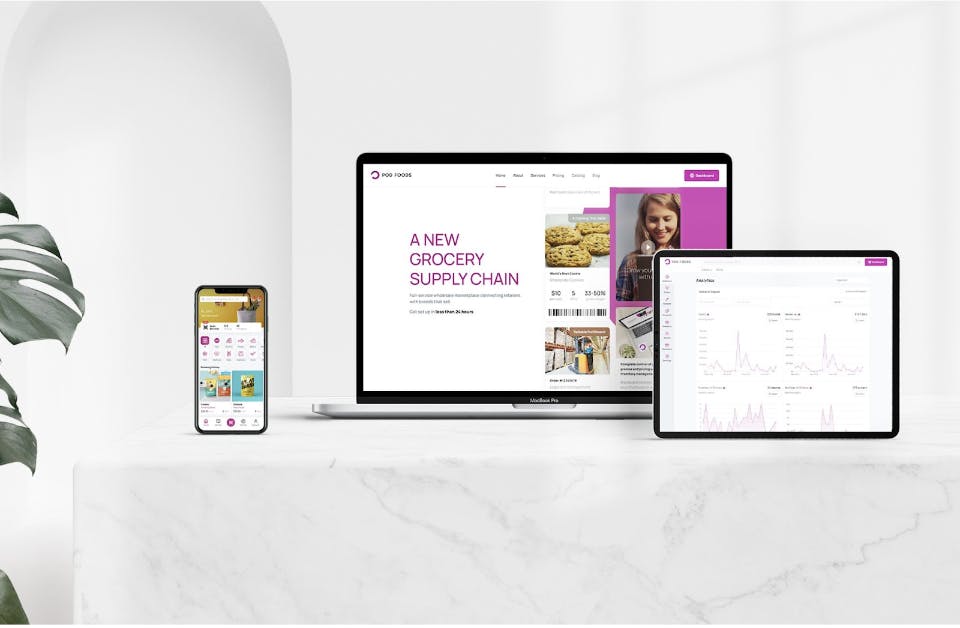
You’ve scaled your production, cultivated your unique branding, and grown your presence in the Consumer Packaged Goods world. Now, you’re ready to boost your sales, visibility, and reach through nationwide distribution. Where do you begin? How do you find the right distributor?
There are a few key factors to keep in mind as you kick-start a launch into retailers nationwide. The experiences we’ve had growing our Pod Foods platform have taught us a number of lessons that we’re thrilled to share with others who are looking to grow their own emerging brands. Consider the following ten factors to ensure a strong, enjoyable, and cost-effective partnership with your distributor:
1) Prioritize transparency
It is critical to select the right distributor for your expanding business and to determine a transparent and reliable platform that will work as hard as you do to get your products placed. Prioritize the distributor that delivers the most insightful look into your company’s sales, inventory, shipments, and analytics, as these metrics help support your retailer relationships.
Additionally, keep in mind that efficiency is paramount in this industry. Emerging brands rarely have surplus cash to waste on supply chain inefficiencies, so make your distribution partner aware of what they can do to help you streamline. The more actionable data they provide, the easier it is for you to manage your business. Lastly, seek out a distributor that will be completely transparent and upfront about costs, so you are fully aware of what your company should expect from day one.
2) Say “no” to deductions

Ideally, you want to get products onto retail shelves as quickly as possible. Don’t be disadvantaged by neglecting to explore all costs associated with distribution. Extraneous fees and deductions are often hidden or not discussed at the forefront of the vetting process, yet these fees can become burdensome down the line. We recommend opting for a smart distribution model evaluated based on commerce needs. An easy way to compare distribution models is with a pricing/earnings calculator. In fact, we provide all brands with this comparison tool via our online earnings calculator.
3) Partnerships are key
Securing a distribution or retail partner can be challenging, as there are a substantial number of startup brands competing against you. While you might be eager to sign-up with the first distributor that agrees to help get you running, consider the long-term implications of the relationship. Specifically, begin relationships with those willing and eager to consistently contribute to your ongoing success. Your distributor should be your strongest partner and they should understand you from both an analytic and human perspective. Forming a healthy partnership will provide a nurturing environment for your emerging brand, as there will inevitably be several unexpected twists and turns.
4) Ensure your partners will provide value
Carefully pick out who you want to partner with and find distributors that increase your profit while adding value in other ways. With so many variables involved in the movement of products from your manufacturing site to retailers’ shelves, make sure your distributor is aligned with your growth plan. Doing so will ensure that when issues arise, they have your back and a responsive support team willing to work through solutions. Margins are tight for many brands, and a hiccup at any point could unnecessarily enhance fiscal risk.

5) Optimize your packaging
Consider how products will look on shelves and plan for products landing in different grocery aisles. Each packaging detail is critical to how brands are perceived in today’s competitive market. Retailers appreciate when extra time is spent on packaging design efficiency upgrades that simplify the process from unboxing to shelving. Depending on the presentation, if individual units can be displayed on shelves, racks, or slacked out, printing instructions inside or on the outer case removes the guesswork. Packaging should optimize storage, handling, and merchandising for the retail receivers, with clear instructions to minimize confusion. Retailers will think highly of your brand when packages are easy to display.
6) Palletize, and palletize well
Your packaging should not only meet retailer and distributor specifications, but also needs to withstand the shipping journey. While damages aren’t always unavoidable, properly palletizing your products will ultimately save time, money, and unnecessary headaches. Brands should take the time to build packages with quality components to ensure the packaging is received in the same condition as it was sent. Take precautionary measures such as using corner boards and slipboards, and be sure to generously wrap with shrink wrap.
7) Use trusted freight carriers
Unsure where to start when it comes to picking a carrier? Ask your distributor if they have preferred options. Picking a trustworthy carrier has a sizable impact on how your product will arrive at the Distribution Center. For any brand looking to develop quality relationships, your products need to be delivered on time and in flawless condition.
8) Avoid out-of-stocks
The current state of the supply chain has made managing inventories and stocked shelves a balancing act. Not all brands have enough backfill production to handle unpredictable sales spikes, but distributors can help you stay on top of inventory. Prevent products going out-of-stock by ensuring that you work closely with your distributor to track and analyze inventory levels in real time. Insightful and proactive distributors will be able to keep products moving to retailers at a stable pace. Foodtech has advanced to the point where vendor platforms can keep tabs on sales history, while processing replenishment requests quickly.
9) Doors, doors, doors!
Locking down a retail account is the first step to success, but don’t get too comfortable there. Maximize your distributor partnership by reviewing the list of doors they currently work with, and then explore which doors might be interested in your brand. A core benefit of landing your first retail account is the jolt of momentum that it can provide in your ongoing discussions with other retailers.
10) Build to grow
In preparation for wholesale distribution, double-check and continuously review every aspect of your process. With supply chains regularly crumbling, or rapidly accelerating, being dynamic to these changes is important. Locking down your production schedule with co-packers ahead of time is a great first step towards growth. It’s also important for your brand to keep an eye on inventory forecasts and predicted sales. Ensuring and demonstrating the means to handle product demand surges is a valuable proof point to retailers, and it goes a long way in building your reputation as a reliable brand.
Your distribution journey begins
Navigating the retail world as an emerging brand will always require direction, insight, and strong relationships across every corner of the space. It’s possible for any brand to grow and become a national grocery store staple, but it’s impossible to go at it alone. It pays to be picky when choosing which partners you bring in to help build your supply chain. Distributors play a vital role in the continued success of any brand, and finding the best fit for your needs is a key step toward everything else falling into place.

